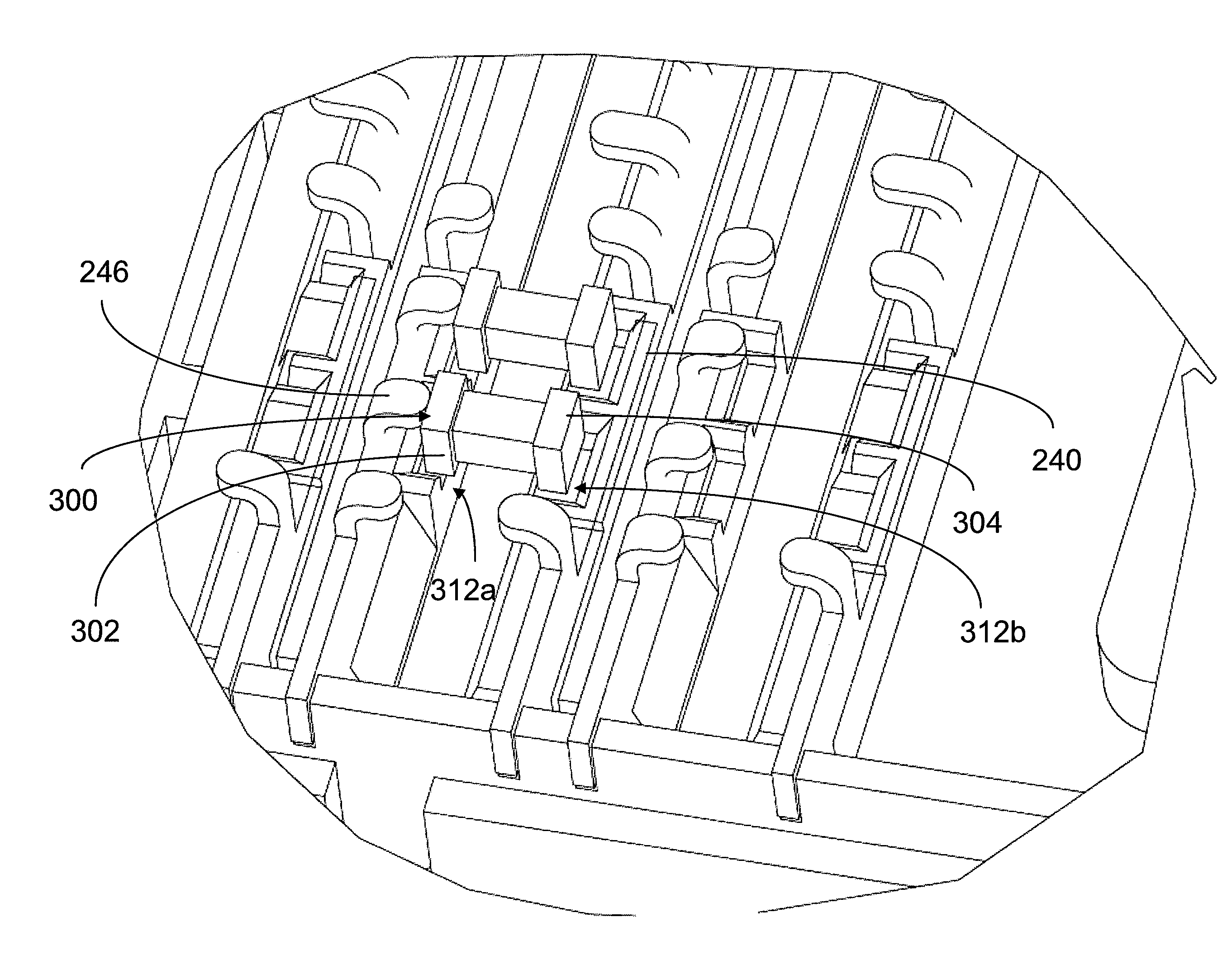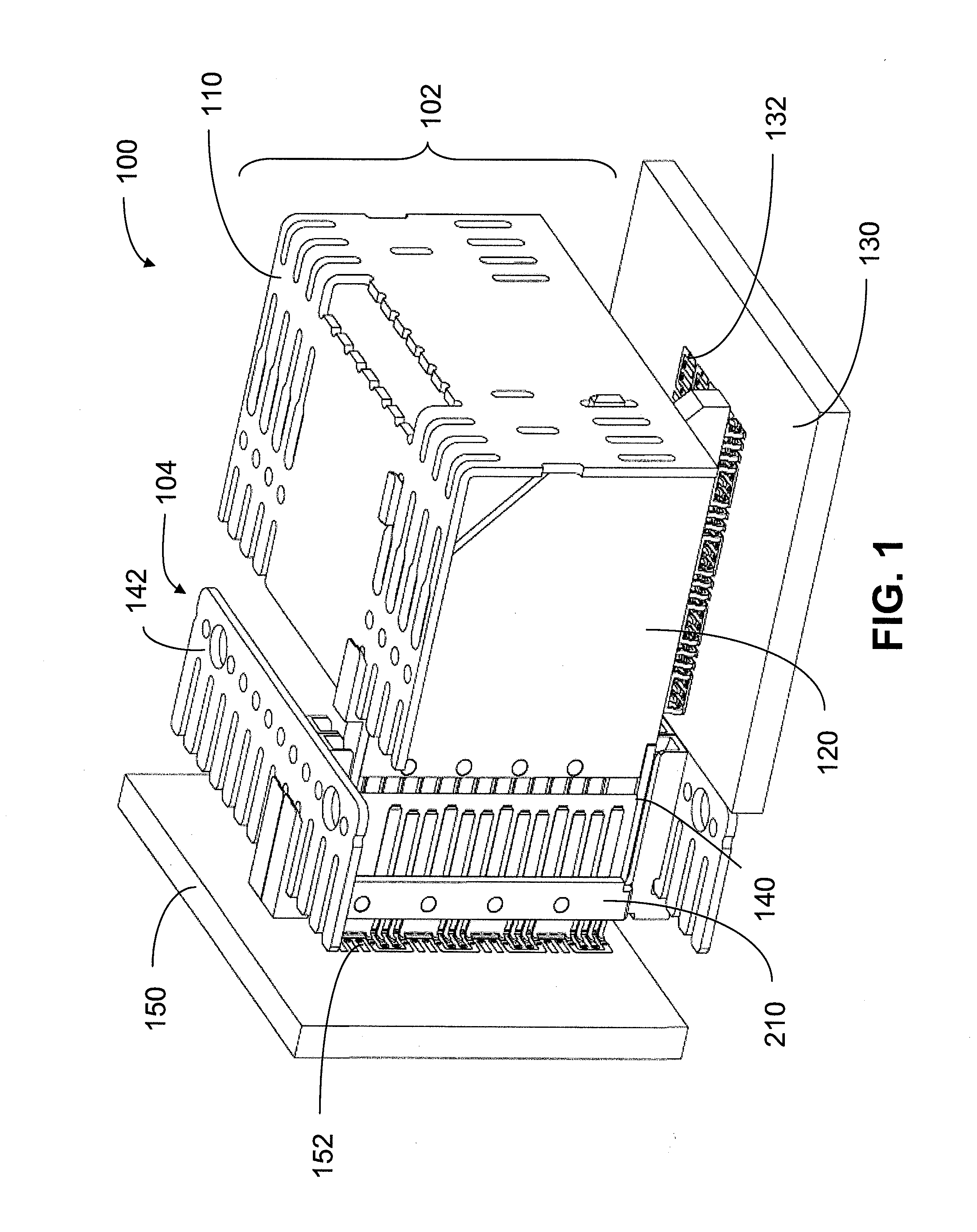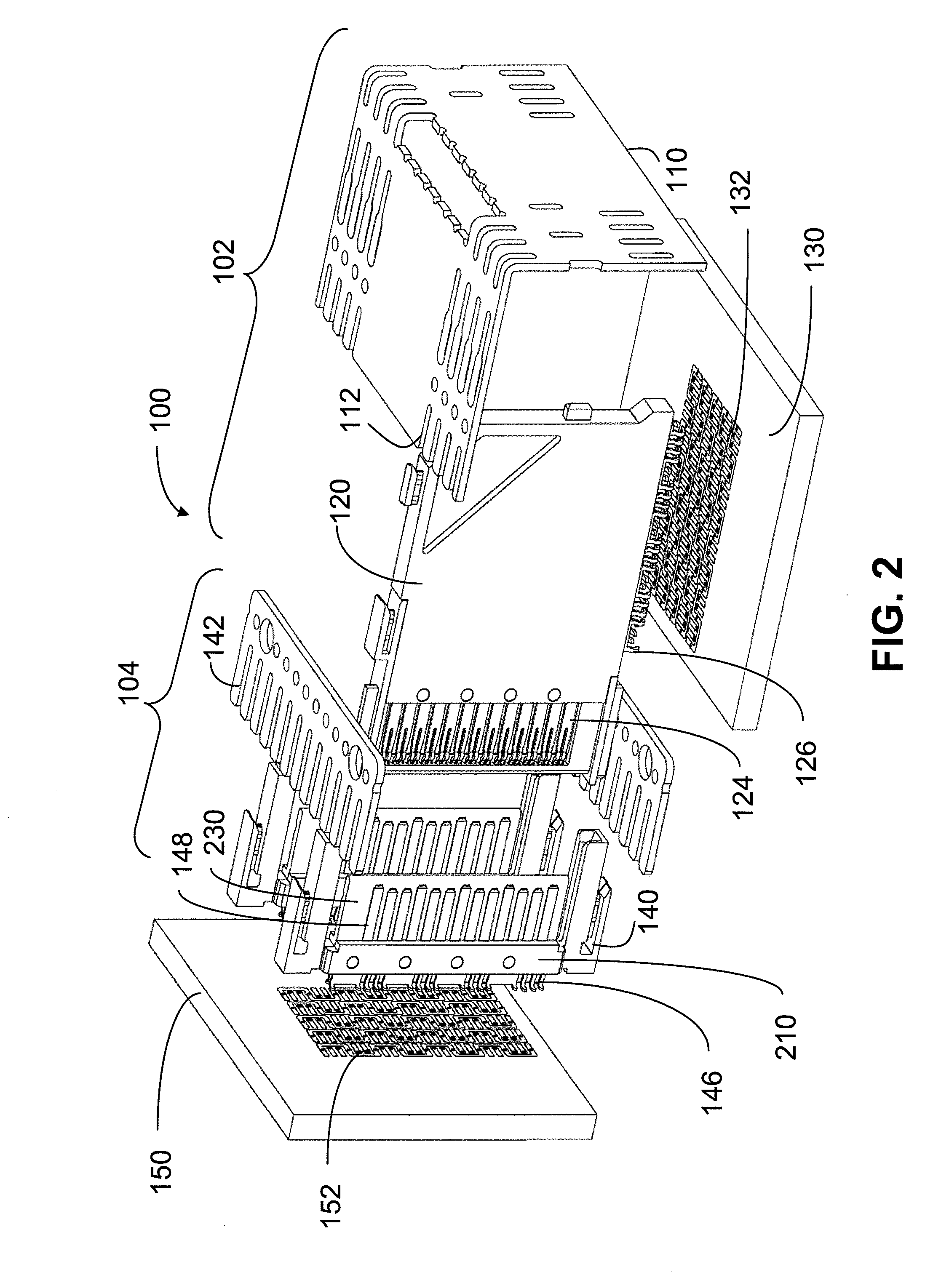Surface mount footprint in-line capacitance
a capacitance and footprint technology, applied in the field of surface mount footprint in-line capacitance, can solve the problems of reducing the integrity with which signals are propagated, high frequency system, and general size of electronic systems, and achieve the effect of improving signal integrity and routability
- Summary
- Abstract
- Description
- Claims
- Application Information
AI Technical Summary
Benefits of technology
Problems solved by technology
Method used
Image
Examples
Embodiment Construction
[0030]The inventors have recognized and appreciated that an improved electronic interconnection system may be formed by placing electronic components, described as capacitors in exemplary embodiments herein, on conductive pads of a substrate, described as a PCB in illustrative embodiments herein, that are within the footprint of a component, described as an electrical connector in illustrative embodiments herein, to be mounted to the PCB. Ends of the capacitors may be connected to pads within the footprint for establishing electrical pathways between signal conductors within the connector and the PCB, which is described in exemplary embodiments as a backplane, but may be a daughter card or other suitable substrate.
[0031]A footprint on the PCB may have mounting pads positioned where contact tails of signal conductors within the connector may be suitably connected to the PCB. However, not all mounting pads may be in direct connection with a via in the PCB. The footprint pattern may al...
PUM
| Property | Measurement | Unit |
|---|---|---|
| center-to-center distance | aaaaa | aaaaa |
| length | aaaaa | aaaaa |
| length | aaaaa | aaaaa |
Abstract
Description
Claims
Application Information
 Login to View More
Login to View More - R&D
- Intellectual Property
- Life Sciences
- Materials
- Tech Scout
- Unparalleled Data Quality
- Higher Quality Content
- 60% Fewer Hallucinations
Browse by: Latest US Patents, China's latest patents, Technical Efficacy Thesaurus, Application Domain, Technology Topic, Popular Technical Reports.
© 2025 PatSnap. All rights reserved.Legal|Privacy policy|Modern Slavery Act Transparency Statement|Sitemap|About US| Contact US: help@patsnap.com



